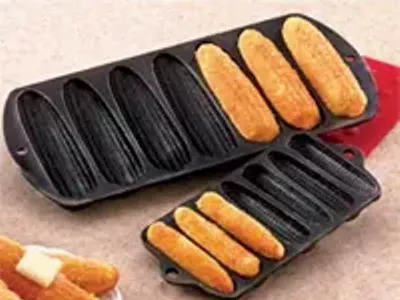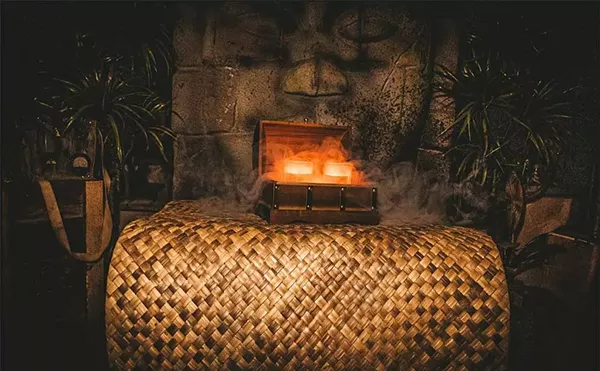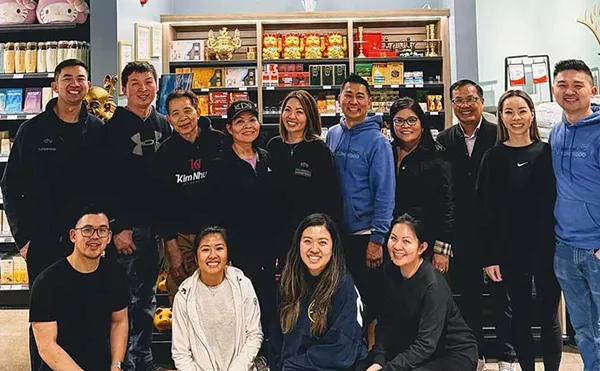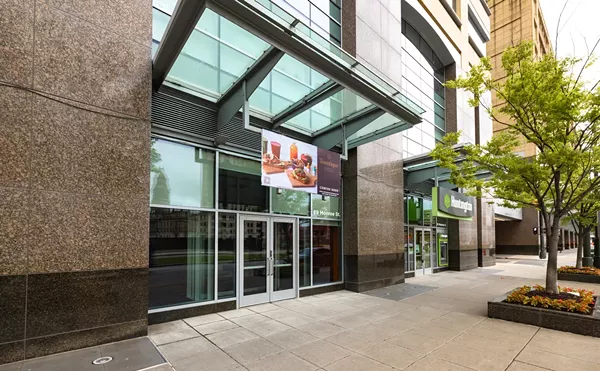
Audio By Carbonatix
[
{
"name": "GPT - Leaderboard - Inline - Content",
"component": "35519556",
"insertPoint": "5th",
"startingPoint": "3",
"requiredCountToDisplay": "3",
"maxInsertions": 100,
"adList": [
{
"adPreset": "LeaderboardInline"
}
]
}
]
Marketing decision for a new restaurant: Should you go with what everyone knows and share the turf with a slew of competitors, or embark on something completely different, aiming toward the more exploratory diner?
Lo Chang, chef and co-owner of the new Bangkok Crossing on Woodward, is from Laos, but he's chosen to start a Thai restaurant. That makes five downtown, if you include Eastern Market. The mass popularity of Thai food — hey, you don't even have to use chopsticks — may have made it seem like a surer thing — but what about us "I'll try anything once" types, who would have loved to check out Laotian?
Actually, according to manager Pheng Xiong, also from Laos, the two cuisines are quite similar, so maybe we're not missing a lot. Still, I'd advise Chang to at least start a Laotian page on the menu. Make us feel like we're the coolest kids on the block. Chang already serves the Laotian national dish, laap, rendered here as the more familiar Thai larb. Add another Laotian staple, sticky rice, and he's halfway there.
In any case, Xiong says, Chang will cook items that aren't on the menu upon request, so bone up and ask.
As at the majority of Thai restaurants in the area, the food at Bangkok Crossing is heavier than you might prefer. Or maybe not — otherwise why has Thai food in America gotten progressively gloppier over the years, if not in response to consumer tastes? Myself, when I want Thai, I seek what New York Times food columnist Nigella Lawson calls "temple food" — something more delicate and, yes, less filling.
But for that you have to go to a Vietnamese restaurant, and not all of them. For now, we'll have to take our Thai (or Laotian) places for what they are.
That said, I enjoyed several of Lo Chang's dishes immensely. Topping the list was pla dook pad ped: crisp red snapper stir-fried with mushrooms, peppers and eggplant in a luscious golden coconut milk sauce. The fish was moist yet crusty, the red-green-gold color scheme made it a delight to the eye, and the eggplant had not been pre-cooked, so it retained just a faint hint of its natural bitterness.
At $12.95, this dish is close to the top of the price range, and like all the others, it's very large.
In pad ma kher, Chang does something very different with eggplant — it's fried within an inch of its life to bring out its sensuousness, so it's rich almost to a fault, and very slightly sweet. The "sweet and sour sauce" in the menu description is misleading; don't think of what this means in a cheap Chinese restaurant. I ordered mine with pork, which matched the eggplant perfectly. At only $6.50 for lunch (like most of the menu), this should be a draw for the downtown noon crowd.
They're tending to order Thai steak and "BBQ chicken," though (what was that I said about Americanization?). We liked our steak, which was simply marinated beef slices served over stir-fried vegetables. A "BBQ" half-duckling was a little on the tough side — lots of crispy skin but not quite tender enough underneath.
Drunken noodles and drunken fried rice are made with a little cooking wine, but it's not discernible. My companion's fried rice was unsophisticated comfort food, about three servings' worth.
Bangkok Crossing's soups are less elaborate than some I've had elsewhere, less noodly. Tom ka is more sour (from galangal) and less rich (from coconut milk) than my favorites. (Does that make me a liar about seeking temple food?)
The tofu tod appetizer is crisp and tasty, although our waitress admitted that the bright pink "plum sauce" is made with vinegar, garlic and food coloring. The spring roll, though, is eminently miss-able, somehow peppery and bland at the same time.
One cool thing about Bangkok Crossing is its glossy white cardboard boxes with metal handles, the kind that for decades were the signature take-out containers for Chinese food. These days many Asian restaurants use Styrofoam, easier to microwave but death to nostalgia. My eating partner and I speculated on what these sturdy boxes could be reused for — gift-giving? Planting? Get a separate container just for your rice and you're set.
Bangkok Crossing is open Monday-Saturday till 8:30 p.m. No alcohol.
Jane Slaughter dines for Metro Times. Send comments to letters@metrotimes.com.






